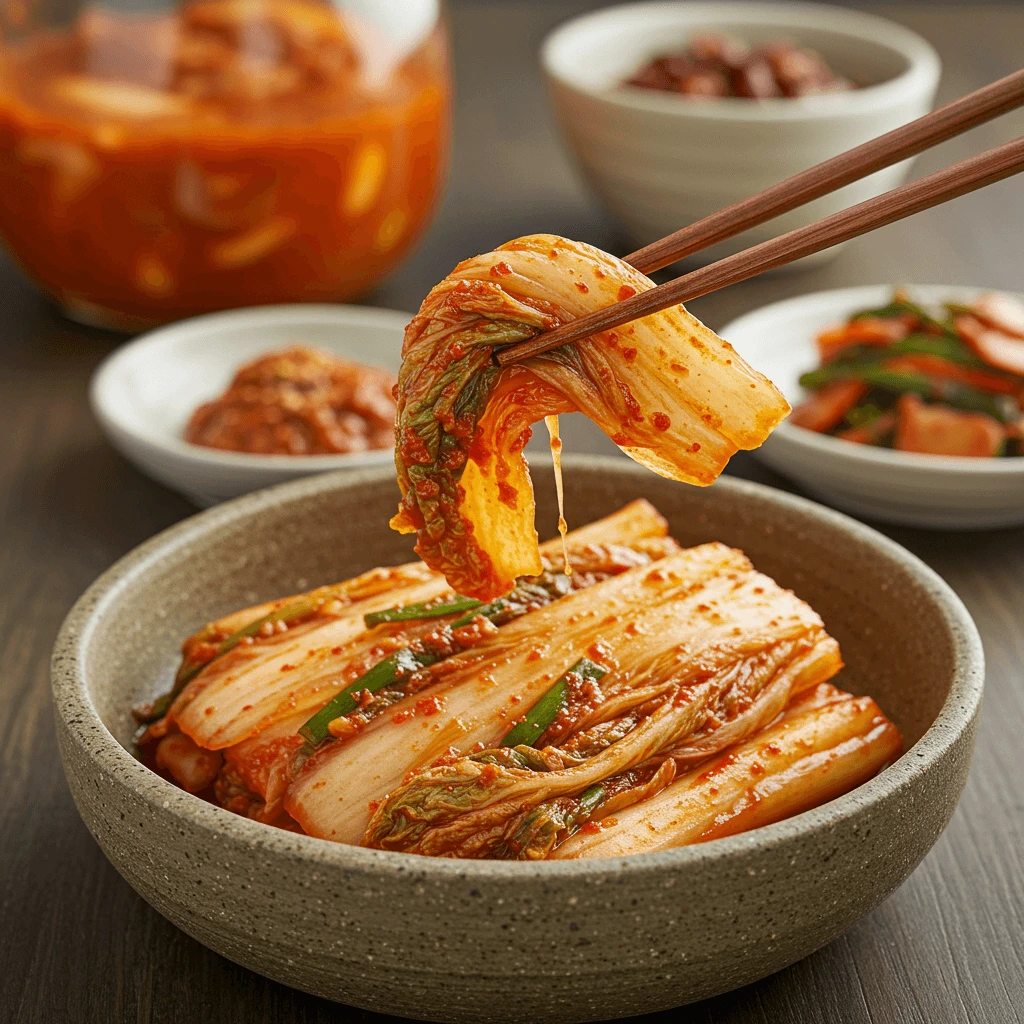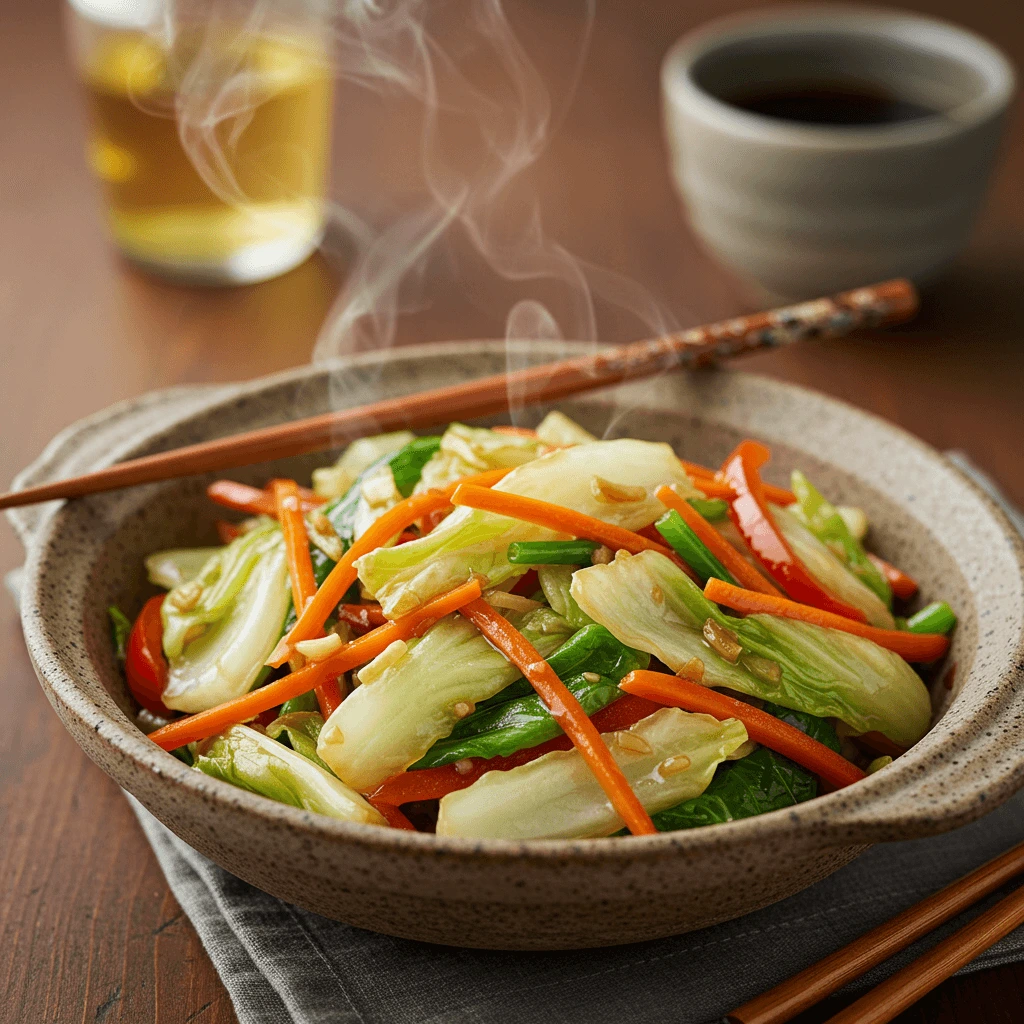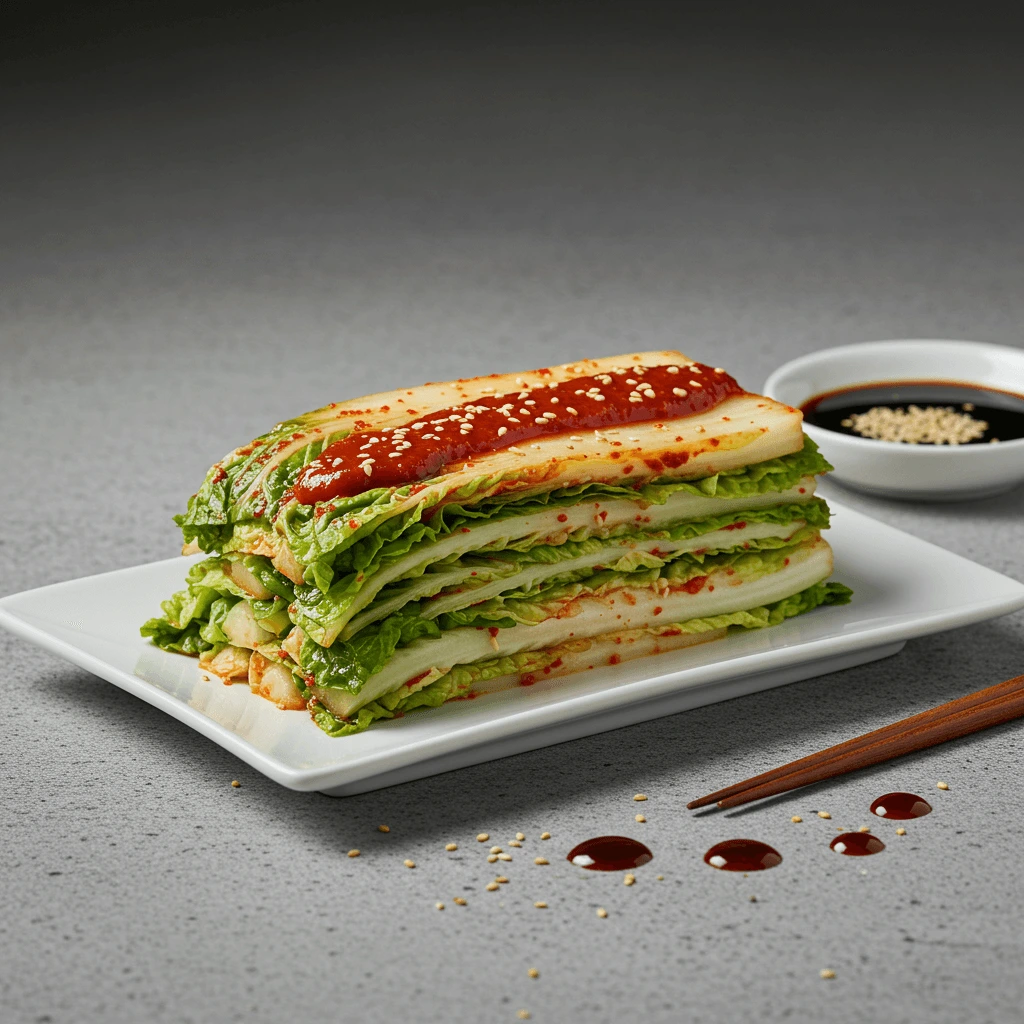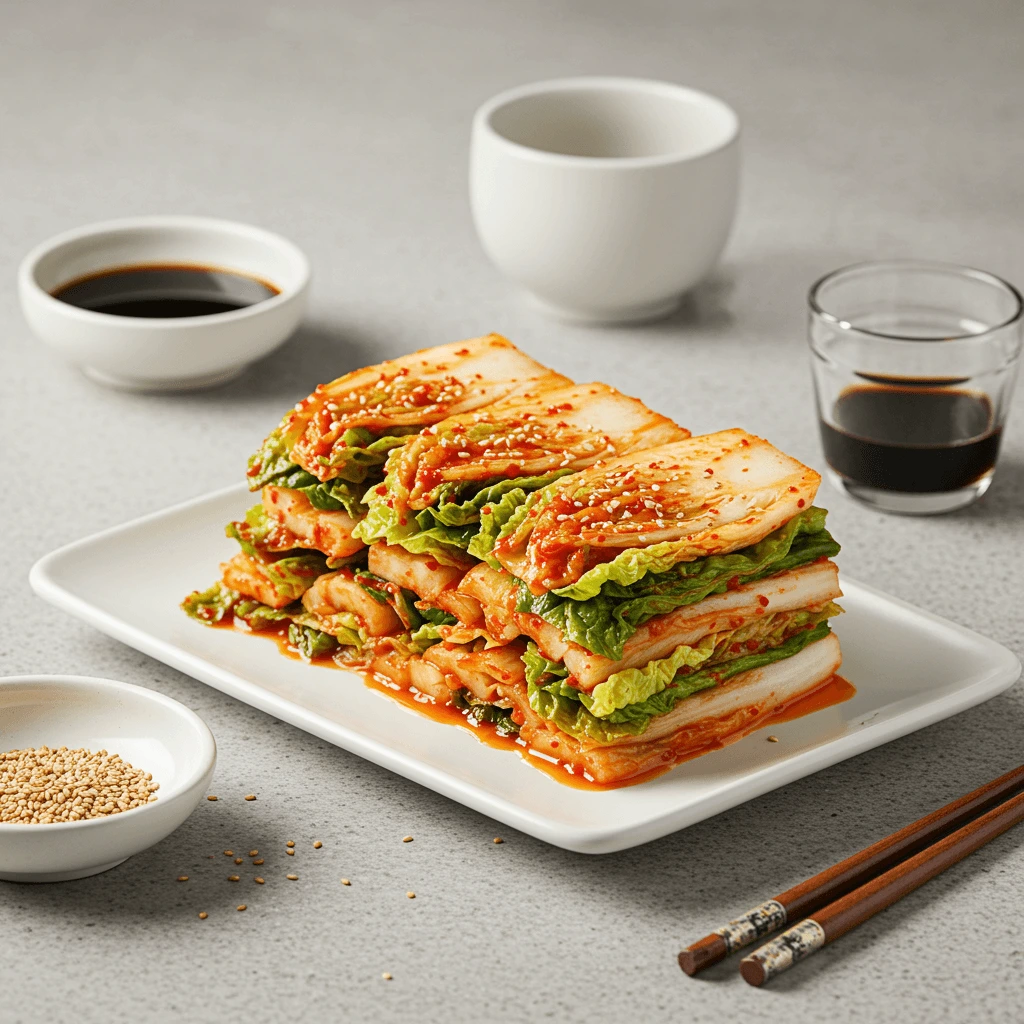Did you know that the average American now consumes 22% more fermented foods than they did just five years ago? Yet, despite this growing trend, 67% of home cooks report feeling intimidated by making traditional kimchi from scratch. If you’re looking for delicious napa cabbage recipes that transform this versatile vegetable into something extraordinary, homemade kimchi might be the perfect place to start. This Korean staple not only delivers incredible flavor but also packs a powerful probiotic punch that can revolutionize your gut health. Today, I’ll walk you through creating authentic, restaurant-quality kimchi at home using fresh napa cabbage as the star ingredient.
Essential Ingredients for Napa Cabbage Recipes

For truly exceptional homemade kimchi, quality ingredients make all the difference. Here’s what you’ll need to create this tangy, spicy fermented delicacy:
- 1 large napa cabbage (about 2 pounds)
- 1/4 cup sea salt or kosher salt
- Water (filtered is best for fermentation)
- 1 tablespoon grated garlic (about 5-6 cloves)
- 1 teaspoon grated ginger
- 1 teaspoon granulated sugar
- 2-3 tablespoons fish sauce (use soy sauce or miso paste for vegan options)
- 1-5 tablespoons Korean red pepper flakes (gochugaru), depending on desired spice level
- 8 ounces daikon radish, peeled and cut into matchsticks
- 4 scallions, trimmed and cut into 1-inch pieces
The vibrant red pepper flakes will infuse your kimchi with that signature fiery color, while the fish sauce provides a deep umami foundation that develops beautifully during fermentation. If daikon isn’t available, you can substitute with regular radishes or even carrots for a slight variation in your napa cabbage recipe.
Timing
Preparation time: 30 minutes
Fermentation time: 1-5 days (24 hours minimum)
Total time: 1-5 days (starting to finish)
Creating kimchi requires approximately 30% less active cooking time than many other preserved vegetables, making it surprisingly accessible for busy home cooks. The majority of the process is hands-off fermentation time, where beneficial bacteria do the work for you. While commercial kimchi often ferments for weeks, this home recipe accelerates the process while maintaining authentic flavor profiles.
Step-by-Step Napa Cabbage Recipes Instructions

Step 1: Prepare the Napa Cabbage
Cut your napa cabbage lengthwise into quarters, removing the core from each section. Cut each quarter crosswise into 2-inch-wide pieces. Place the cabbage in a large bowl, sprinkle with salt, and toss well to coat. Pour enough filtered water to cover the cabbage and place a plate on top to keep the cabbage submerged. Let it stand at room temperature for 1-2 hours until the cabbage becomes pliable.
Pro tip: When working with napa cabbage recipes, don’t rush this salting step! The salt draws out moisture and prepares the cabbage to absorb the flavorful marinade later on.
Step 2: Rinse and Drain the Cabbage
After soaking, rinse the cabbage under cold water three times to remove excess salt. Use your hands to gently squeeze out as much water as possible, then transfer the cabbage to a clean bowl. This rinsing process removes approximately 85% of the initial salt, ensuring your kimchi isn’t overly salty.
Step 3: Creating the Perfect Sauce for Napa Cabbage Recipes
In a medium bowl, combine the garlic, ginger, sugar, and fish sauce, forming a wet paste. Stir in the Korean red pepper flakes, adjusting the amount based on your heat preference. The paste should be thick but spreadable – if it seems too dry, add an additional tablespoon of fish sauce.
Pro tip: For a milder kimchi that still delivers authentic flavor, start with just 1 tablespoon of pepper flakes. You can always increase the spice level in your next batch of napa cabbage recipes!
Step 4: Combine Vegetables with Paste
Add the radish matchsticks and scallions to the kimchi paste and mix thoroughly. Add the cabbage and, using your hands (with food-safe gloves if desired), massage the paste into each cabbage leaf until evenly coated. The personal touch of hand-mixing introduces beneficial bacteria that kickstart fermentation.
Step 5: Pack and Ferment
Pack the kimchi into a clean, airtight container with a tight-fitting lid. Press down firmly to remove air pockets and ensure the vegetables are completely submerged in their liquid. Leave about 1 inch of headspace at the top as the kimchi will expand during fermentation.
Pro tip: A dedicated fermentation crock is ideal, but any clean glass jar works perfectly for small batches of napa cabbage recipes.
Step 6: Ferment at Room Temperature
Let your kimchi container sit at room temperature (65-75°F is optimal) for 1-5 days, depending on your preference for fermentation. During this time, open the container daily to release gases and press the vegetables back down under the liquid.
Pro tip: Taste your kimchi daily to monitor the fermentation process. When it reaches your desired level of tanginess, move it to the refrigerator to slow fermentation.
Nutritional Benefits of Napa Cabbage Recipes
Homemade kimchi offers impressive nutritional benefits, particularly compared to other condiments. A standard 1/2 cup serving provides:
- Calories: 25
- Protein: 2g
- Carbohydrates: 4g
- Dietary Fiber: 2g
- Sodium: 240mg
- Vitamin A: 30% of Daily Value
- Vitamin C: 15% of Daily Value
- Iron: 10% of Daily Value
- Probiotics: 3-4 different beneficial bacterial strains
Research shows that regularly consuming fermented napa cabbage recipes like kimchi may help improve digestive health, boost immunity, and potentially reduce inflammation.
Healthier Alternatives for the Recipe
While traditional kimchi is already nutritionally dense, you can modify this napa cabbage recipe to accommodate various dietary needs:
- Lower sodium option: Reduce the initial salt by 25% and shorten the soaking time to 30 minutes
- Vegan kimchi: Substitute fish sauce with equal parts soy sauce mixed with a small amount of miso paste
- Lower carb version: Omit the sugar and use a small piece of grated pear instead for natural sweetness
- Extra probiotic boost: Add 1/4 cup of liquid from a previous kimchi batch to jump-start fermentation
These modifications ensure that everyone can enjoy the benefits of napa cabbage recipes regardless of dietary restrictions.
Serving Suggestions
Homemade kimchi is incredibly versatile and pairs beautifully with various dishes:
- Serve alongside bibimbap or Korean barbecue for an authentic experience
- Fold into scrambled eggs for a spicy breakfast upgrade
- Add to grilled cheese sandwiches for unexpected complexity
- Mix into fried rice with leftover vegetables for a quick weeknight meal
- Use as a topping for tacos or burgers for fusion flavor
- Chop and fold into mayonnaise to create a probiotic-rich sandwich spread
For a complete meal, serve kimchi with steamed rice, grilled protein, and a simple cucumber salad to balance the robust flavors of your napa cabbage recipe.
Common Mistakes to Avoid with Napa Cabbage Recipes

Even experienced cooks can encounter challenges when making kimchi. Here are the most frequent pitfalls and how to avoid them:
- Using table salt instead of sea salt or kosher salt: Table salt contains anti-caking agents that can interfere with fermentation and create off flavors.
- Not providing enough time for fermentation: According to fermentation experts, approximately 40% of home cooks refrigerate their kimchi too soon. Allow at least 24 hours at room temperature for proper development.
- Using metallic containers or utensils: Metal can react with the acidic environment. Stick to glass, ceramic, or food-grade plastic for all napa cabbage recipes involving fermentation.
- Forgetting to press out air pockets: Air exposure can lead to mold growth rather than beneficial fermentation. Press your kimchi down firmly during daily checks.
- Not adjusting fermentation time based on room temperature: Warmer environments speed fermentation, while cooler rooms slow it down. Use your senses rather than strict timing.
Storing Tips for the Recipe
Proper storage is crucial for maintaining the quality and safety of your kimchi:
- After reaching your desired fermentation level, transfer kimchi to the refrigerator, where it will continue to ferment very slowly.
- Keep kimchi submerged under its liquid to prevent mold growth.
- Use clean utensils each time you remove kimchi from the container to avoid introducing unwanted bacteria.
- Properly stored, homemade kimchi improves with age and will keep for 3-6 months in the refrigerator.
- For the best flavor profile in your napa cabbage recipes, consume kimchi within the first 2-3 months of fermentation.
Unlike many prepared foods that degrade quickly, kimchi actually develops more complex flavors over time, making it an excellent addition to your refrigerated staples.
Conclusion
Making authentic kimchi at home transforms simple napa cabbage into a probiotic-rich, flavor-packed staple that enhances countless meals. This traditional Korean method preserves fresh vegetables while creating complex umami flavors through natural fermentation. By following these detailed steps, you’ll create restaurant-quality kimchi with the perfect balance of spice, tang, and crunch. Try this napa cabbage recipe today, and share your fermentation journey in the comments below! Don’t forget to subscribe for more international recipe adaptations and fermentation guides.
FAQs
How do I know when my kimchi is properly fermented?
Your kimchi is ready when it develops a pleasantly sour aroma and tangy flavor. You’ll also notice small bubbles forming when you press down on the vegetables, indicating active fermentation.
Can I reduce the spiciness while maintaining authentic flavor?
Absolutely! Authentic Korean kimchi varies in spice levels regionally. Reduce the gochugaru to 1 tablespoon for a milder version that still delivers traditional flavor notes.
Why did my kimchi develop a white film on top?
A thin white film is typically kahm yeast, which is harmless but can affect flavor. Simply scrape it off and ensure your vegetables remain submerged in liquid.
How can I use over-fermented kimchi that’s too sour?
Over-fermented kimchi makes an excellent cooking ingredient! Use it in kimchi jjigae (stew), fried rice, or savory pancakes where the enhanced sourness adds complexity.
Can I make kimchi with regular green cabbage instead of napa cabbage?
While napa cabbage recipes yield traditional kimchi texture, you can substitute regular cabbage. The result will be slightly different in texture but still delicious—just expect a longer fermentation time due to the cabbage’s denser structure.

